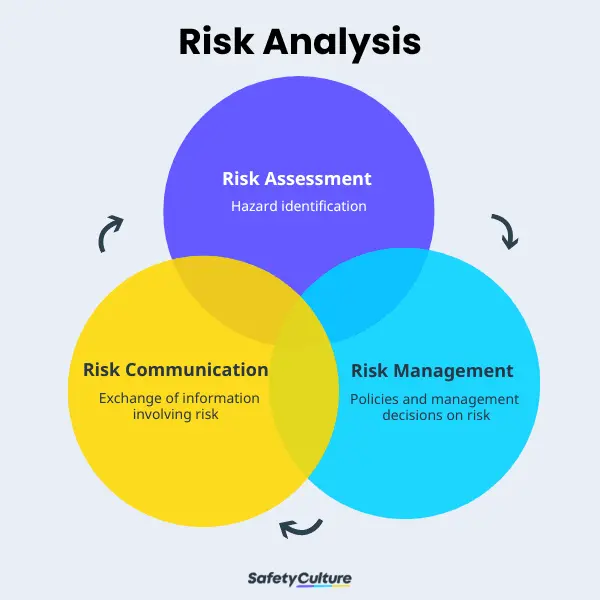Addressing the Unnoticed Risks: The Importance of Risk Management in Tech
Addressing the Unnoticed Risks: The Importance of Risk Management in Tech
Blog Article
Exploring the Significance of Risk Management for Effective Decision-Making Techniques
In the complex globe of business, Risk Management becomes a crucial consider the decision-making process. The capability to determine potential risks and possibilities, and strategize appropriately, can lead to the distinction between success and failing. With devices such as SWOT and PESTEL, companies are outfitted to make enlightened selections, cultivating strength and adaptability in an ever-changing environment. Wondering how this functions? Allow's unload the dynamics even more.
Understanding the Concept of Risk Management
Risk Management, an important element in decision-making, is frequently misconstrued or oversimplified. Risk Management involves regimented and structured strategies, using information and insightful evaluations. From financial uncertainties, lawful responsibilities, tactical Management mistakes, to mishaps and all-natural disasters, it addresses different risks - importance of risk management.
The Role of Risk Management in Decision-Making Processes
In the world of strategic planning and organization procedures, Risk Management plays an indispensable duty in decision-making processes. Risk Management hence comes to be an important tool in decision-making, aiding leaders to make informed options based on an extensive understanding of the dangers involved. Risk Management serves as a vital component in the decision-making processes of any type of organization.
:max_bytes(150000):strip_icc()/risk-management-4189908-FINAL-2-976ae194e01848618ca94941ab9d2395.jpg)
Exactly How Risk Management Boosts Strategic Preparation
In the context of strategic preparation, Risk Management plays a critical function. Starting with the identification of potential dangers, it further encompasses the execution of Risk mitigation actions. The role of Risk Management is dynamic but not fixed, as it requires continuous monitoring and adjusting of approaches.
Identifying Prospective Dangers

Implementing Risk Reduction
Risk reduction techniques can range from Risk avoidance, Risk transfer, to risk decrease. Each method must be tailored to the particular Risk, considering its possible effect and the company's Risk tolerance. Effective Risk reduction needs a deep understanding of the Risk landscape and the potential impact of each Risk.
Tracking and Changing Methods
Though Risk reduction is a vital step in calculated planning, continual surveillance and adjustment of these techniques is equally vital. This recurring process enables companies to recognize brand-new risks and reassess existing ones, guaranteeing the carried out techniques continue to be efficient in the ever-changing company setting. It additionally gives a possibility to evaluate the success of the Risk Management procedures, allowing changes to be made where necessary, further improving calculated resource planning. Efficient tracking and modification call for the usage of analytics and key efficiency indications (KPIs) to measure effectiveness. These tools offer useful data-driven insights that can inform critical decision-making. Monitoring and adjusting Risk Management techniques is a critical part for enhancing an organization's resilience and calculated preparation.
Situation Researches: Effective Risk Management and Decision-Making
In the globe of organization and financing, effective Risk Management and decision-making commonly offer as the pillars of prosperous business. These cases highlight the value of sharp Risk Management in decision-making procedures. These instances underscore the critical duty of Risk Management in calculated decision-making.
Tools and Techniques for Reliable Risk Management
Navigating the detailed maze of Risk Management needs the ideal set of techniques and tools. These tools, such as Risk signs up and warmth maps, help in recognizing and assessing prospective threats. Strategies include both measurable techniques, like sensitivity evaluation, and qualitative methods, such as SWOT evaluation. These aid in focusing on threats based on their prospective influence and Read Full Report likelihood. Risk reaction approaches, a key element of Risk Management, include approving, avoiding, moving, or mitigating dangers. Monitoring and controlling risks, through routine audits and reviews, guarantee that the strategies remain effective. With these methods and devices, decision-makers can browse the complex landscape of Risk Management, thus helping with informed and effective decision-making.
Future Fads in Risk Management and Decision-Making Methods
As we check out the substantial landscape of Risk Management, it becomes evident that the tools and strategies made use of today will proceed to progress. The idea of Risk society, where every participant of a company is conscious and entailed in Risk Management, will gain much more importance. These fads proclaim a more positive and comprehensive approach in the direction of additional resources Risk Management and decision-making.
Final thought

Risk Management thus comes to be a vital device in decision-making, assisting leaders to make enlightened options based on a detailed understanding of the dangers entailed. Risk mitigation techniques can vary from Risk avoidance, Risk transfer, to run the risk of decrease (importance of risk management). Effective Risk mitigation calls for a deep understanding of the Risk landscape and the potential influence of each Risk. Risk feedback methods, an essential component of Risk Management, entail accepting, preventing, moving, or mitigating threats. The idea of Risk society, where every participant of a company is aware and included in Risk Management, will get a lot more prominence
Report this page